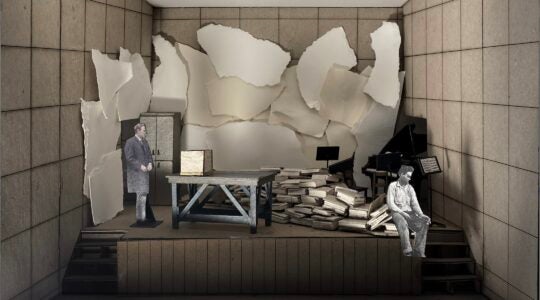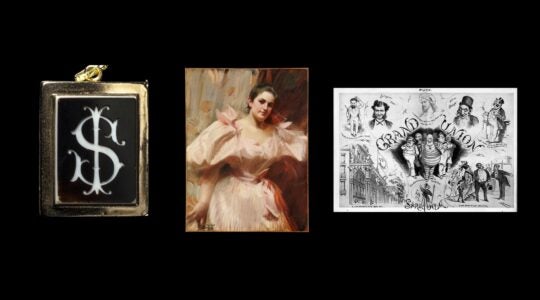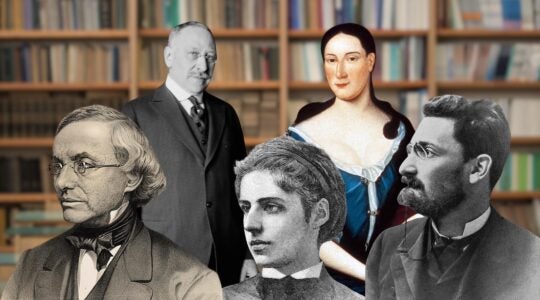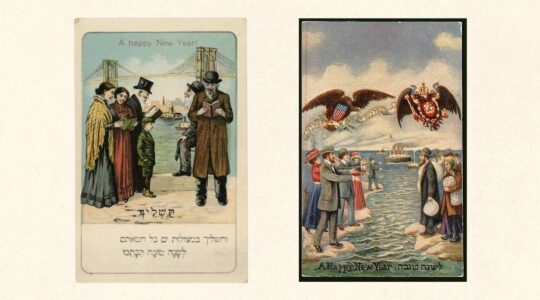While it was no slouch in its first incarnation, the
refurbished Israel Museum, which re-opened late last month after a three-year makeover, is now staking a claim to be considered one of the world’s best museums.
Since its July 26 re-launch, locals and tourists have flocked to the museum, which received a whopping 90,000 visitors during its first three weeks of operation. With the Jewish holidays fast approaching — peak season for Israeli tourism — museum officials are expecting an unprecedented number of visitors.
Isaac Molho, chairman of the museum’s board of directors, said, “The Israel Museum’s renewal project strengthens the museum’s position as one of the most important social and cultural centers in the country. … It will provide generations of visitors, both from Israel and from abroad, with unique experiences of the art, culture and history of communities throughout time and around the globe.”
Pini Shani, deputy director of the Ministry of Tourism’s marketing administration, said that Jerusalem is the linchpin of its campaign to attract five million tourists by 2015 (it’s hoping for 3.5 million this year), and that the revitalized museum will play a key role.
“Jerusalem is the center of every visit to Israel, and the Israel Museum contributes a great deal to this. It combines all of the things tourists look for when they come to Israel: culture, art, entertainment, spirituality,” Shani said. Along with the new Holon Design Museum (the first Israeli museum entirely dedicated to design) just outside Tel Aviv, the reopened Israel Museum is one of two major arts and design venues to garner international headlines this year. Shani noted that the expanded museum “is among the 10 largest museums in the world.”
The Israel Museum’s vast collections, ranging from prehistory to contemporary art, used to overwhelm the senses. Now, the greatly enlarged exhibition halls, which display far fewer objects with the spacing they deserve, enable visitors to appreciate every piece.
At 204,500 square feet — almost twice its original size — the museum is just large enough to house its treasures without exhausting its visitors. But there’s enough to see to warrant repeat visits.
James Snyder, who assumed the museum’s directorship in 1996, following a 22-year stint at the Museum of Modern Art, spent much of the $100 million earmarked for the facelift on righting what he perceived as the museum’s former shortcomings.
The 20-acre campus, majestic as it is, is terribly exposed to the elements, and it took several minutes to climb the interminable steps to the main building. Today, a wheelchair-accessible, temperature-controlled walkway leads to the exhibition halls, and the rest of the museum is accessible as well.
Changes in architecture, design and content have also produced a greater sense of cohesiveness.
“We needed a transformative change that would allow the richness of the collection to shine,” Snyder recently told Art Knowledge News. “The Israel Museum used to be described as many museums under one roof. Now it has been recast as a continuum — of history and culture, of region set into the world, of today set into the past.”
Many have commented that, aside from the Judaica wing, the new museum feels less “Jewish” and more universal in character, and not everyone thinks that’s a good thing.
An article in Jewish Ideas Daily commented on the museum’s new “stamp of multiculturalism” and “hybridization,” and gave as an example the very first thing visitors encounter in the vast entryway: a 6th-century CE mosaic floor discovered in a Jewish building that, instead of portraying Jewish themes, shows Odysseus on the Nile.
Likewise, the stunning new archaeological wing, which includes some of the most impressive Jewish artifacts in the world, “including the oldest known copy of a biblical text,” begins with a grouping of coffins and prehistoric human and animal bones “and closes with the Ottomans.”
It’s not that the museum’s unparalleled collection of ancient Jewish artifacts is hidden. It’s just that they’re seamlessly incorporated into the time line of history, between the Moabites, the Philistines, the Greeks and the Romans.
A grandiose room that displays remnants of an ancient synagogue, church and mosque that coexist in nearly equal splendor underscores that the three monotheistic faiths were born in the region.
Unlike the archaeology wing, with its emphasis on the ancient past, the vastly improved Judaica wing focuses more than ever on the present, or at least the recent past. Here, the museum’s extraordinary collection of Jewish objects gives each pride of place. The classic pieces, such as the Torah mantel and spice box collections, are still there — though displayed in a less crowded, more artistic way. Each historic menorah is encased in its own well-lit box.
Yet there is also an emphasis on modern Jewish life that, if it existed before the renovation, was lost on many visitors.
Contemporary black-and-white photos show both haredi and non-Orthodox weddings, as well as an Israeli burial. A bat-mitzvah dress is displayed alongside more traditional outfits, including an Indian wedding cloak, traditionally hung from a ceiling, which hid the upper part of the bride’s body. And there is a lively, sometimes humorous video relating to the most modern of Jewish holidays: Israeli Independence Day.
It’s possible to spend an entire day roaming through the galleries alone. They contain enough nooks and crannies to render the collection less intimidating — even though it’s hard not to state in wide-eyed wonder at the sheer number of works by Pissaro, Sisley, Monet, Gaugin, Cezanne and Van Gogh, Picasso and, in the farthest hall, Andy Warhol, contained in one place.
The new gallery devoted to Israeli art demonstrates that different Israelis define themselves and their art in diverse, and often critical, ways. One of the most provocative pieces is Chic-Point by Sharif Waked, an Arab citizen of Israel. It consists of a video installation that shows Arab men modeling easy-to-open/unzip/fold-over clothing on a catwalk. Some shirts rise like a pull blind, presumably in order to prove to Israeli checkpoint guards that the wearer is not concealing a bomb or weapon.
Almost as provocative is an iconic work by famed Jewish Israeli photographer Adi Nes depicting uniformed Israeli soldiers in a reconstruction of the Last Supper. Against the backdrop of camaraderie among the soldier-disciples sits a solitary soldier, staring out sadly, as if he knows something the others have yet to grasp.
Positioned very close to the colorful, somewhat romantic images of Eretz Yisrael portrayed by artists like Nahum Gutman (1898-1980), these contemporary works are jarring and at the same time thought-provoking.
Here, as in the other galleries, the curators are clearly asking the public to analyze and question their assumptions of the Middle East. The answers are up to the visitors.
The New York Jewish Week brings you the stories behind the headlines, keeping you connected to Jewish life in New York. Help sustain the reporting you trust by donating today.




